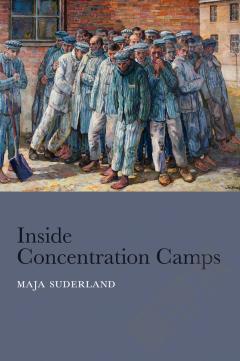Inside Concentration Camps —— Social Life at the Extremes
----- 内部集中营:社会生活的极端
Foreword by Beate Krais Preface Translator s note A. Introduction 1. Topic and research question 2. The Third Reich and the Nazi concentration camps 2.1. The establishment of the Nazi concentration camps: Historical, social and legal background 2.2. Germany and its forcible detention camps 2.3. The organizational structure of the concentration camps 2.4. The concentration camp SS and guards 2.5. Summary: A complex interrelationship B. Sociological avenues of inquiry 3. Introductory comments on the disciplinary context and methods 3.1. Empirical material and methodological approach 3.2. The impossibility of representing reality and the special characteristics of Holocaust literature 3.3. The relationship between historical scholarship and sociology 4. Sociological orientations 4.1. Preliminary remarks: The sociology of Pierre Bourdieu and the use of other central theoretical ideas 4.2. The basic concepts of society 4.2.1 Individuals and society: Views of a complex relationship 4.2.2 Classes and ways of life: Social differentiation 4.2.3 Gender: Physical characteristics and their symbolic significance for social differentiation 4.2.4 Ethnic group and caste: The belief in genetic kinship and the notion of social inescapability 4.2.5. Summary: Habitus and society 4.3. Concentration camps 4.3.1. The significance of physical torture: Michel Foucault s restoration of sovereignty through the vengeance of the sovereign and the dissymmetry of forces 4.3.2. Total institutions and the possibility of surviving one: Erving Goffman s secondary adjustments 4.3.3. Suppressing the odors of death: Zygmunt Bauman s concept of culture 4.4. A theoretical perspective: The complex society of the Third Reich and the social reality in the forcible detention camps C. The social world of the Nazi concentration camps 5. Camp life 5.1. Arrival and registration of the prisoners at the camp or: How the practical logic of the camp gradually revealed itself to the prisoners 5.2. Prisoner life: Recurring processes 5.3. Three levels of sociality 5.4. Summary: A micro-sociological view of the intricacies of complex camp life or: How many realities were there? 6. Prisoner society 6.1. Fragmentation, dissociation, community-building: Social processes 6.2. Regular prisoners, armband wearers, camp aristocracy: The mass and the elite 6.3. Men, women, children or: What s still normal here? 6.4. Summary: An examination of the structure of the prisoner society or: The significance of similarity and difference D. Social libido 7. The constitution of social identity in the concentration camps: The concepts of individuality and the importance of social structures in a topsy-turvy world E. Notes to the text F. Bibliography
{{comment.content}}








 京公网安备 11010802027623号
京公网安备 11010802027623号